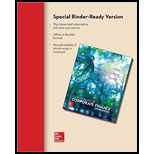
To calculate: The faster payment of the loan by Person X if he makes a monthly payment of $225 with his new card and what happens if Person X has 2% of fee charged on any of his transferred balance
Introduction:
The time taken for the repayment of the loan is termed as the number of periods. It is denoted by “t”.
Answer to Problem 69QP
Person X makes the payment faster by 45.10 months and if Person X is charged with a fee of 2% then he takes to pay off the card by 43.28 months.
Explanation of Solution
Given information:
The Christmas ski vacation of person X was good but it ran over the budget. However, everything is not lost. Person X received a mail that states to transfer $12,000 from the current credit card that charges 18.6% of an annual rate and the new credit card of 9.2% charge. The monthly payment made by Person X with his new card is $25. It is assumed that there is a 2% fee charged for the balance transferred.
Note: The number of periods that is essential to pay back the loan with no fees is calculated first. The number of payments is solved using the formulae of the
Formula to calculate the present value annuity:
Note: C denotes the payments, r denotes the rate of exchange, and t denotes the period.
Compute the present value annuity for without fee:
Solving t with this equation:
Hence, the number of months without an annual fee at the rate of 18.60% is 113.94 months.
Note: Now the value of t is computed using the formulae of the present value of an annuity without fee and at an annual rate of 9.20%
Formula to calculate the present value annuity:
Note: C denotes the payments, r denotes the rate of exchange, and t denotes the period.
Compute the present value annuity for without fee:
Solving t with this equation:
Hence, the number of months without an annual fee at the rate of 9.20% is 68.84 months.
Calculation of the months to pay off the new card without fee:
Note: The quicker months to pay off the card is calculated by subtracting the calculated number of months without an annual fee at 9.20% from the calculated number of months without an annual fee at 18.60%.
Hence, the faster payments made by Person X without a fee on the new card is 45.10 months
Note: It is not necessary to compute the time that is needed to pay back the current credit of Person X with a fee as it incurs no fee. It will take 113.94 months to pay off the current card of Person X.
Calculations of the time taken to pay back the new card with a transfer fee:
The calculations of the time taken to pay back the new card with a transfer fee are made with the help the equations of the present value of the annuity. The annual rate is 9.20%.
Formula to calculate the present value annuity:
Note: C denotes the payments, r denotes the rate of exchange, and t denotes the period.
Compute the present value annuity for without fee:
Note: The 2% interest rate is added to the present value of an annuity amount
Solving t with this equation:
Hence, the number of months with an annual fee at the rate of 9.20% is 70.66 months.
Calculation of the months to pay off the new card without a fee:
Hence, the faster payments made by Person X with a fee on the new card is 43.28 months.
Want to see more full solutions like this?
Chapter 6 Solutions
Fundamentals of Corporate Finance (Special Edition for Rutgers Business School)
- Explain how an increase in interest rates by a central bank could affect bond prices and stock market performance. Explanation.arrow_forwardWhat is the purpose of diversification in an investment portfolio, and how does it reduce risk?arrow_forwardExplain how an increase in interest rates by a central bank could affect bond prices and stock market performance.arrow_forward
- What is the purpose of diversification in an investment portfolio, and how does it reduce risk? Need help!arrow_forwardWhat are the key differences between a company’s income statement and its cash flow statement? Why are both important for financial analysis? Need help!arrow_forwardWhat are the key differences between a company’s income statement and its cash flow statement? Why are both important for financial analysis?arrow_forward
- What is the relationship between risk and return in finance, and how is this reflected in the Capital Asset Pricing Model (CAPM)? Explain.arrow_forwardDefine the time value of money (TVM). How does TVM influence decision-making in capital budgeting? Explanation.arrow_forwardWhat is the relationship between risk and return in finance, and how is this reflected in the Capital Asset Pricing Model (CAPM)?arrow_forward
- 3. Explain the concept of compounding. How does compounding impact the future value of an investment? Need help!arrow_forward3. Explain the concept of compounding. How does compounding impact the future value of an investment?arrow_forwardWhat is the difference between a stock and a bond, and how do they function as investment options? Need help now !arrow_forward
 Essentials Of InvestmentsFinanceISBN:9781260013924Author:Bodie, Zvi, Kane, Alex, MARCUS, Alan J.Publisher:Mcgraw-hill Education,
Essentials Of InvestmentsFinanceISBN:9781260013924Author:Bodie, Zvi, Kane, Alex, MARCUS, Alan J.Publisher:Mcgraw-hill Education,

 Foundations Of FinanceFinanceISBN:9780134897264Author:KEOWN, Arthur J., Martin, John D., PETTY, J. WilliamPublisher:Pearson,
Foundations Of FinanceFinanceISBN:9780134897264Author:KEOWN, Arthur J., Martin, John D., PETTY, J. WilliamPublisher:Pearson, Fundamentals of Financial Management (MindTap Cou...FinanceISBN:9781337395250Author:Eugene F. Brigham, Joel F. HoustonPublisher:Cengage Learning
Fundamentals of Financial Management (MindTap Cou...FinanceISBN:9781337395250Author:Eugene F. Brigham, Joel F. HoustonPublisher:Cengage Learning Corporate Finance (The Mcgraw-hill/Irwin Series i...FinanceISBN:9780077861759Author:Stephen A. Ross Franco Modigliani Professor of Financial Economics Professor, Randolph W Westerfield Robert R. Dockson Deans Chair in Bus. Admin., Jeffrey Jaffe, Bradford D Jordan ProfessorPublisher:McGraw-Hill Education
Corporate Finance (The Mcgraw-hill/Irwin Series i...FinanceISBN:9780077861759Author:Stephen A. Ross Franco Modigliani Professor of Financial Economics Professor, Randolph W Westerfield Robert R. Dockson Deans Chair in Bus. Admin., Jeffrey Jaffe, Bradford D Jordan ProfessorPublisher:McGraw-Hill Education





